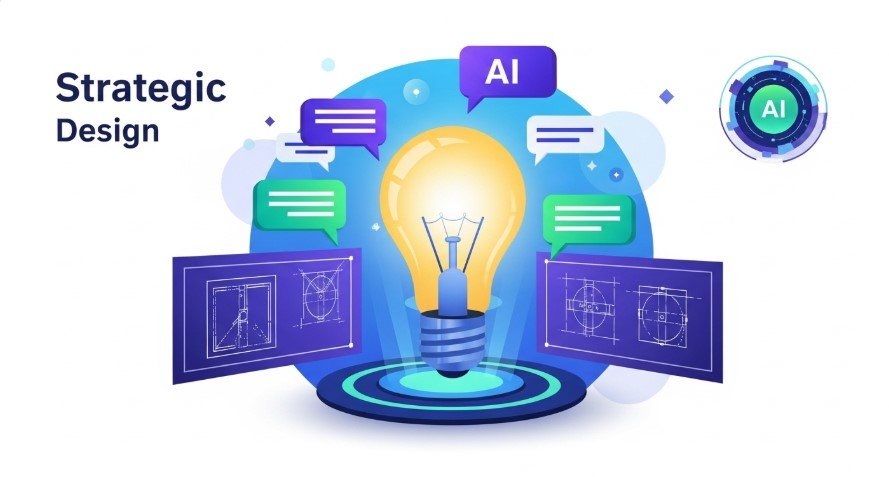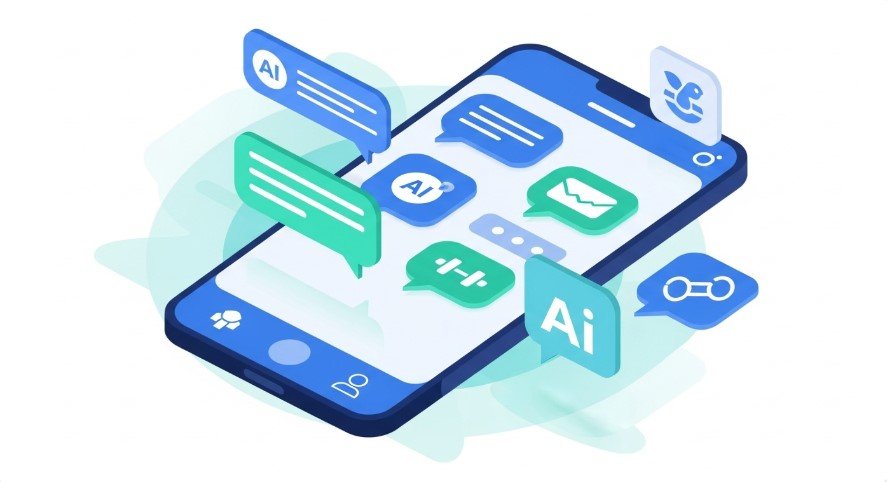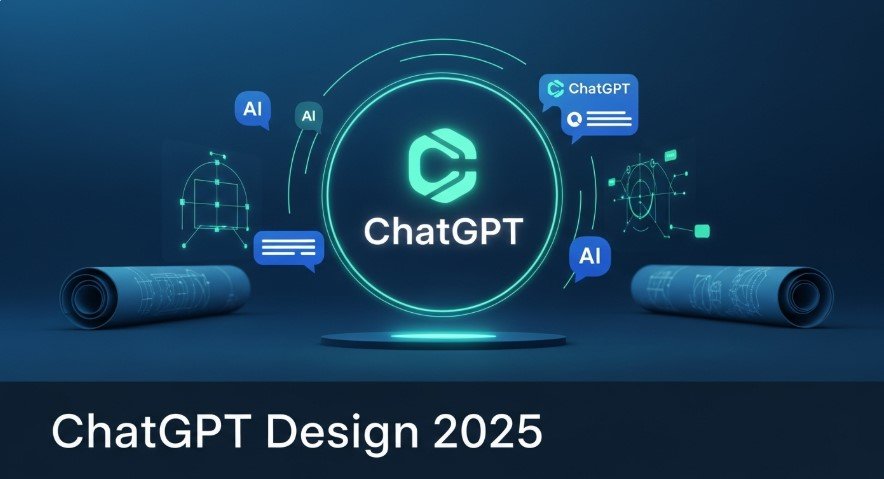Strategic design blends creativity with business goals to create user-focused solutions. In 2025, ChatGPT, powered by advanced models like GPT-4o, helps designers streamline tasks, spark ideas, and align with market trends. This guide shows how to use ChatGPT for strategic design with practical steps and tips.
What is Strategic Design?
Strategic design combines design thinking with business strategy. It focuses on user needs, long-term goals, and innovation. Key elements include:
- Understanding user behaviors and needs.
- Aligning designs with business objectives.
- Creating innovative, sustainable solutions.
- Adapting to market changes.
ChatGPT supports these by analyzing data, generating ideas, and simulating user interactions.
How to Integrate ChatGPT into Strategic Design
ChatGPT’s 2025 features, like multi-modal inputs and advanced reasoning, make it a powerful tool for designers. Here’s how to use it:
Idea Generation
ChatGPT can spark creative design ideas based on trends. For example:
- Prompt: “Suggest 5 design ideas for a sustainable fashion app for Gen Z.”
- Output: Ideas like virtual try-on features or eco-friendly reward systems.
This saves time and inspires innovation.

User Research
ChatGPT analyzes user feedback to uncover insights. For example:
- Prompt: “Summarize user feedback for our fitness app from the past 6 months.”
- Output: Trends like users wanting simpler navigation or personalized features.
This speeds up research and highlights user needs.
Learn more in How to Use ChatGPT for UX Research Plan.
Prototyping Support
ChatGPT describes design elements but can’t create visuals. For example:
- Prompt: “Describe a wireframe for an e-learning platform with key features.”
- Output: A text description of a user-friendly interface with progress trackers.
Use this to guide prototyping in tools like Figma.
Strategic Planning
ChatGPT processes market data for planning. For example:
- Prompt: “Outline a 3-year plan for expanding our e-commerce business.”
- Output: A plan with target markets and marketing strategies.
See How to Use ChatGPT for Competitive Analysis in UX Design.
Advanced Uses
ChatGPT’s 2025 capabilities enable deeper applications.
Competitor Analysis
It summarizes competitor data for insights. For example:
- Prompt: “List key features of top 3 competitors in online education.”
- Output: A report on strengths and weaknesses.
Explore Combining RAG with ChatGPT Prompts.
Scenario Planning
ChatGPT predicts future trends. For example:
- Prompt: “Generate 3 scenarios for retail consumer behavior by 2027.”
- Output: Trends like AR shopping or eco-conscious buying.
Best Practices for ChatGPT in Strategic Design
Follow these tips to maximize results:
- Use specific prompts for relevant outputs.
- Combine text, images, and audio inputs.
- Verify outputs with trusted sources.
- Stay updated on OpenAI’s 2025 releases, like GPT-5.
- Avoid sharing sensitive data.
- Blend ChatGPT with human creativity.
Table: Best Practices
| Specific Prompts | Be clear and detailed. | “Suggest 5 ideas for an accessible banking app.” |
| Multi-Modal Inputs | Use text, images, and audio. | Upload a competitor’s app screenshot for analysis. |
| Verify Outputs | Check accuracy with external sources. | Cross-check trends with Statista. |
| Stay Updated | Follow OpenAI’s updates. | Visit OpenAI Release Notes. |
| Data Privacy | Avoid sensitive data. | Use anonymized data in prompts. |
| Human Expertise | Enhance AI outputs with creativity. | Refine ideas in team brainstorming. |
Case Study: Health App Design
A team used ChatGPT for a 2025 health app:
- Ideas: Suggested AI nutrition plans and gamified fitness challenges.
- Research: Created personas for busy professionals.
- Content: Wrote onboarding scripts.
- Planning: Developed a go-to-market strategy.
The team verified outputs with user testing for success.

Limitations
ChatGPT has limits:
- Lacks emotional understanding.
- Can’t create visual designs.
- May provide inaccurate data.
- Requires careful data privacy.
Use it as a tool, not a replacement for designers.
Conclusion
ChatGPT in 2025 is a game-changer for strategic design. It speeds up idea generation, research, and planning. Combine it with human creativity and verification for best results. Start using ChatGPT to create user-focused, business-aligned designs today.
FAQs
What is strategic design?
It blends design thinking with business goals for user-centric solutions.
Can ChatGPT replace designers?
No, it assists but lacks emotional and visual design skills.
Best prompts for design?
Use specific prompts like “Suggest 5 ideas for a banking app.”
How does ChatGPT help research?
It analyzes feedback and creates user personas.
Is ChatGPT good for prototyping?
It describes designs but can’t create visuals.
People Also Ask
- How can ChatGPT aid strategic planning?
It analyzes trends and data for comprehensive plans. - What are ChatGPT’s design limitations?
No emotional intelligence or visual design capabilities. - Can ChatGPT improve SEO for design content?
Yes, it generates keywords and SEO-friendly content.
